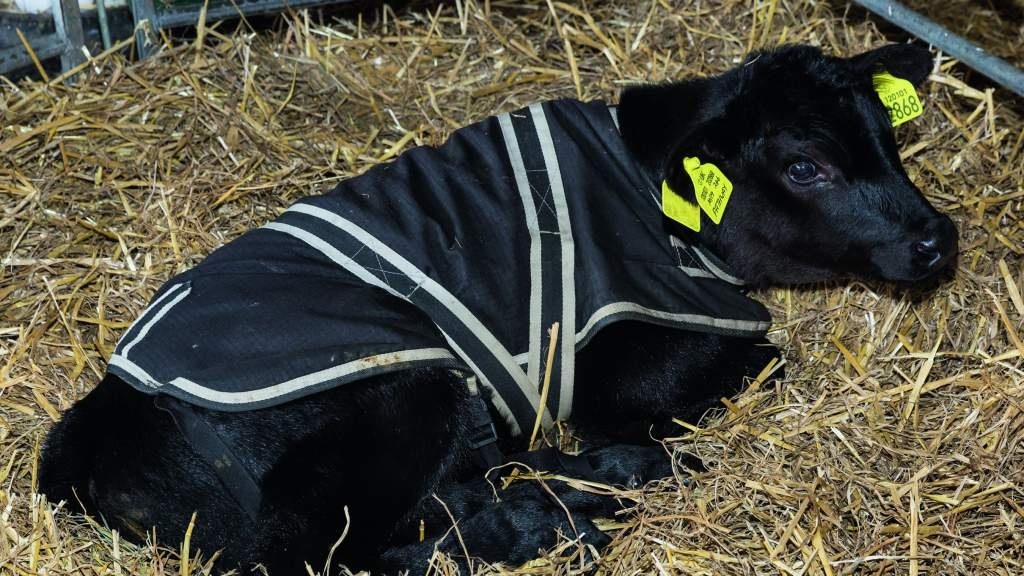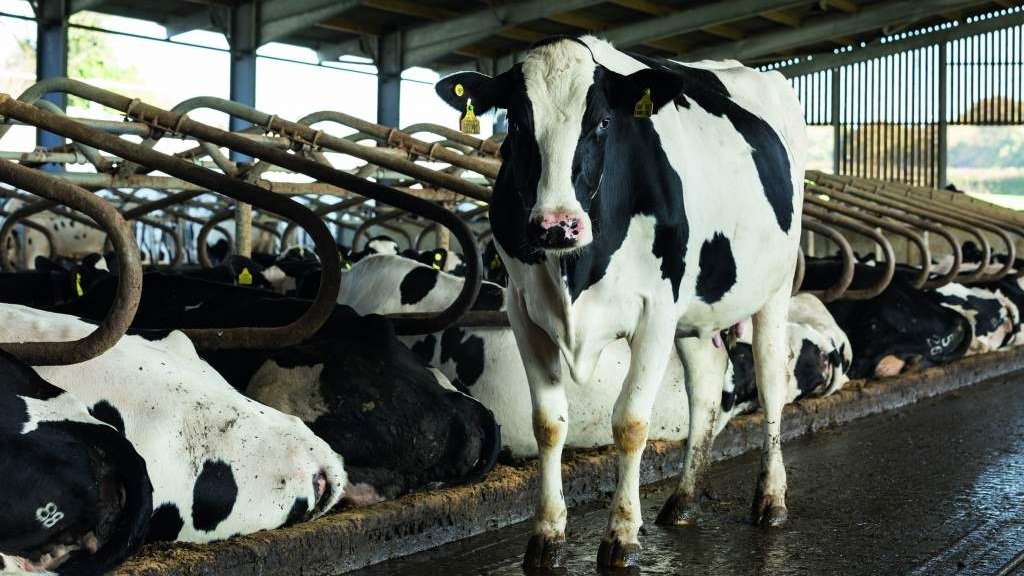New dairy tenants, Ed and Bethan Williams are embracing a sexed and beef strategy to help create a sustainable system fit for the future.

A sexed and beef strategy fits with Ed and Bethan William’s aim to build a herd for the future, has the best genetics for their system and ensures every calf has value. About 18 months ago, the pair took a dramatic step; moving their family’s 200-cow Holstein Friesian herd down from Yorkshire to a new dairy tenancy in Kent.
With the move came a complete system shakeup, with cows moving from a herringbone milking system, where they were grazed for six months, to a housed, guided traffic robot milking system.
The couple has reseeded grassland and established maize on what was a sheep and tired arable farm. They have also chosen to look at a revised breeding strategy as part of an Arla Cogent trial looking at how targeted use of Sexed ULTRA 4M dairy sexed semen and beef can create a more sustainable dairy system.
Sexed ULTRA 4M uses double the usual amount of sexed semen cells per straw, with the aim of bringing conception rates in line with conventional semen.
The idea is to serve the best females to sexed to breed quality replacements and put the rest to beef, thus avoiding the production of low value dairy bull calves. Heifers are also genomic tested to identify the highest genetic merit animals to serve to sexed. Mr Williams says there were multiple reasons he was attracted to the breeding programme: “More revenue from the calves was the biggest driver, especially for the dwindling returns from black and white bulls down in this area.


Conception rates at Beacon Farm, Ashford, Kent
“The secondary benefit is we should get a higher genetic merit replacement as we are only breeding from the best.” The herd, at Beacon Farm, Ashford, Kent, yields 10,000 litres at 4.1% fat and 3.3% protein.
In recent years, breeding has increasingly focused on milk fat and protein in response to Arla milk contract requirements. Mr Williams says: “I also want a strong wide cow which is going to last.”
More modern facilities on the new unit means cow size is no longer as much of a restriction compared to the older facilities in Yorkshire. However, the pair do not want anything with too large a stature. The move to the robot system has also brought udder traits into focus.
Mr Williams says: “We obviously never thought about teat position or milking speed. Now I realise a cow which takes 15 minutes to milk is taking two places in the robot.”
These parameters are now considered when selecting bulls. As part of the trial, they chose dairy sexed Holstein sires, Delta B52, Achan, Fantastic and Yager.

BREEDING STRATEGY
In the past, most heifers would have been given two chances to normal dairy sexed semen and would then have been served to Aberdeen- Angus. Conventional dairy semen would have predominantly been put on the cows with very little sexed semen used due to lower conception rates to sexed.
Mr Williams says: “We didn’t used to have great success with the cows [with sexed]. We used it on about 5% of cows as it didn’t really hold.” Now, Cogent’s global business development manager Rudolph Linde ranks cows according to the Cogent Custom Index (CCI). The CCI breeding index is produced for individual farms after taking into account their specific milk contract and breeding requirements. The best first and second lactation cows based on CCI are then given two chances to Sexed ULTRA 4M, as long as they have had no calving difficulties or health problems at calving. Only the best heifers, identified through genomic testing, will now be served to Sexed ULTRA 4M, with the rest put to Aberdeen-Angus.
With average conception rates across cows and heifers comparable to conventional (see table, above), Mr Williams has the confidence to target sexed semen on his best females to produce his required 50-60 replacements a year.

PRECISION
He says: “We are being more precise with breeding. Having done genomic testing and having the confidence in the semen means we have the confidence to use it on cows and we know they will hold on first and second lactation cows.
“We are running at 39% conception rates overall, which is the same overall as last year when we didn’t use sexed semen on cows. Now we are getting the required replacement heifers we need, without black and white bulls and any drop in conception rate. We are also getting the long-term gain of breeding from our best cows and heifers.”
The recent slump in beef prices has further underlined the value of running such a strategy. Mr Williams says: “It has hammered it home even more the importance of producing the right calf. When you produce a black and white [bull] calf and they make very little, it is depressing.”
He also believes serving everything to an Aberdeen-Angus bull instead of a British Blue also makes sense as it puts less stress on the dam and leads to fewer post-calving problems.
With 180 cubicles available in the robot milking shed, ensuring every place is filled with a highly productive dairy animal is vital; something which is helped by the sexed and beef strategy, supported by genomic testing. Mr Williams says: “You have the fixed costs of the robots and the shed, so I want the best animal in each available space to produce milk and get back in-calf easily.”